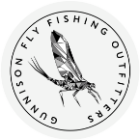When winter settles into Gunnison, Colorado, fly fishing becomes a thinking game. Trout metabolism drops. They move less, feed less, and refuse anything that demands effort. If you’re fishing the same way you did in July, you’re probably striking out. Understanding winter trout behavior is the first step toward consistent success.
Trout in winter are energy conservers. They tuck into deep pools, soft seams, and slow “walking-pace” current where they can feed without burning calories. Their strike zones shrink to inches—not feet—and a fly needs to drift right into their path to get noticed. Water clarity also sharpens. That means long leaders, delicate presentations, and absolute stealth are no longer optional—they’re essential.
Midday sun can sometimes trigger short bursts of activity, especially if the water temperature rises just a couple of degrees. That’s your window. Target tailwaters, spring creeks, and deeper runs near Gunnison, CO, where stable winter flows keep trout accessible even when the mercury drops.
Depth Beats Pattern: Precision Is Everything
Fly choice matters; but in winter, depth matters even more. Many anglers miss fish not because their fly is wrong—but because it’s not drifting deep enough. Dialing-in depth means small adjustments: a lighter or heavier nymph, a slight split shot, or even changing your indicator position. The first few drifts are experiments. After that, you’re just dialing-in the strike zone.
Winter trout won’t rise much. Watch your indicator for micro-hesitations or your euro-nymph line for subtle pauses. Long, natural dead-drifts with Zebra Midges, RS2s, WD-40s, and Flashback Pheasant Tails can be deadly—if they’re presented at the right level.
Winter stealth also plays a massive role. Low and clear water demands quiet wading, muted colors, and long leaders (10–12 feet). Use 6X or 7X fluorocarbon to make your fly behave naturally in the current. Two steps too close, a sloppy mend, or a loud footfall on the bank can ruin the drift before your fly even gets near a fish.
Master Presentation and Know When to Move
Forget fast strips and flashy casts—winter fly fishing is about patience and control. For nymphing, let the fly drift naturally with zero drag. Mend softly, avoid splashy indicators, and focus on soft seams. For streamers, go deep and slow—strip… pause… pause… twitch. Most takes feel like a tap or line stop, not a violent strike.
Dry fly opportunities do exist, especially during sunny afternoons when midges or BWOs hatch. Flies like Griffith’s Gnats and Midge Clusters can tempt surface feeders—but the timing and the conditions have to line up just right.
Knowing when to move is another overlooked winter skill. If you’ve adjusted depth, changed patterns, and drifted 10–15 times with no action, it’s time to find another pool. Winter fish often pod together—find one, and others are likely nearby.
And remember: even in winter, a guided fly fishing trip in Gunnison, Colorado can dramatically improve your chances. Our local experts at Gunnison Fly Fishing Outfitters help anglers read the river, choose the right flies, and adjust their tactics for cold-weather success.
